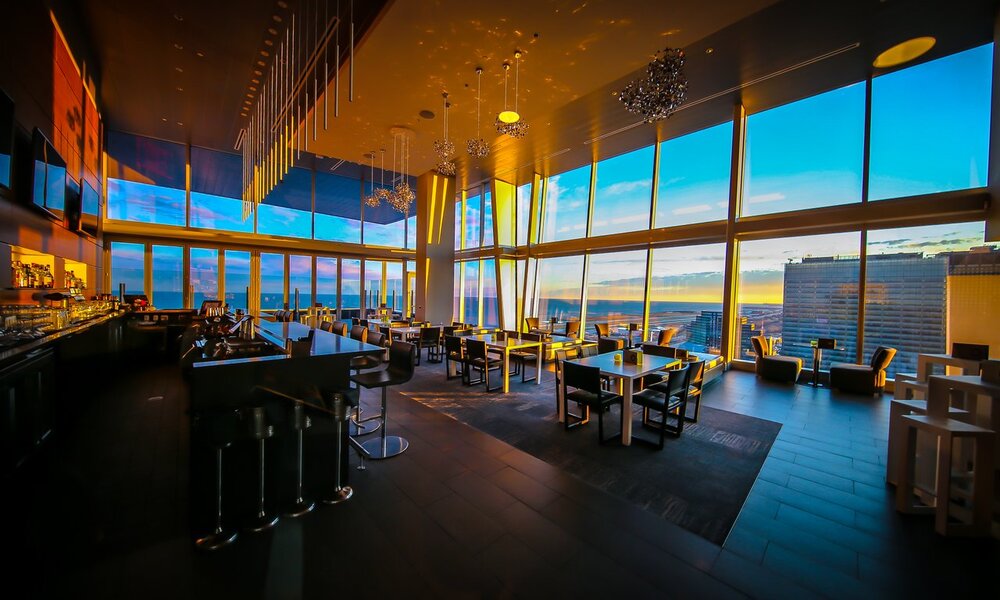
We’re Living the Future of Hospitality—This Is What it Looks Like
It’s different, and in some ways, it’s even better.
Q: My group has used the past year to plan for a new normal—but we haven’t done any events yet in the pandemic, so it’s hard to imagine what they’ll really look like. What’s actually going on in practice, and how’s it working?
A from Teri Agosta, General Manager of the Hilton Cleveland Downtown: We have done multiple events against the backdrop of the pandemic, both social and corporate. Fortunately, we’ve been able to deliver an outstanding experience for guests and attendees—even though that experience now looks different. In fact, we’ve seen how the changes caused by the pandemic can actually add substantial value to our events, now and in the future. Here’s what we’ve been seeing:
Expanded Attendance, and With It Expanded Opportunities
Consider a typical wedding. Some would-be guests just don’t make the list—either because it’s too expensive for the hosts to include them, or they are not in the position to travel. When it comes to destination weddings, often people can’t possibly attend. But when families broadcast or simulcast the wedding, they can virtually distribute the special day to more guests.
If guests are attending one of our events virtually, we ask ourselves how to make them feel equally part of the moment as in-person guests. So, our team might send a welcome kit with a T-shirt or some food from the area; for weddings, they might send a piece of wedding cake. It’s important to provide a tactile element that encourages that sense of connection. It’s about making everyone feel connected and included, no matter what the format is.
On the corporate side, we recently participated, along with our Destination Cleveland colleagues, in the American Society of Association Executives annual meeting. The typical attendance in past years was about 4,000; because it was virtual this year, the attendance soared to almost 9,000. People may be more likely to join when there isn’t the financial and logistical commitment of travel and time. A lot of associations are finding out they actually have a larger attendance for their meetings now.
We recently hosted an event for a pharma group, where about 100 socially distanced people in a conference room each had individual microphones and broadcast the content around the world. They were able to amplify their message to a much broader audience than ever before.
Plus, with more remote learning opportunities and more remote work opportunities, families can do a lot more traveling to their children’s sporting events, for instance. So we see more visitors across sectors taking advantage of this flexibility to travel and attend events in person, and that’s an opportunity for planners to capture.
Customization Prospects
Everyone is at a different comfort level when it comes to event attendance, travel, and socializing these days. And hospitality providers are in the position to meet each guest where they are.
People come here for socially distant events that take place in multiple rooms, for instance, that are all connected via screens to the same content. So they’re able to be in the same venue, but in a way that feels safe to them. Then, there are people who just want to be in the same room, but six feet apart—even for weddings—and we can accommodate that with strategic seating and layout options.
So, it’s all about creating content based on what the groups and the individual attendees need. Some people are happy to mingle in a way they deem safe, and others just want to go straight to their rooms. Some people want help with their luggage, and some don’t. Some people want their rooms cleaned, and some don’t. We can make everyone comfortable, and we’re doing it.
Modified Messaging
Of course, quality hospitality vendors and venues have always carefully adhered to safety protocols. But whereas those practices were once meant to be hidden, these days our guests want to see everything explicitly. Our housekeeping and sanitization procedures used to be our secret; if we spotted a housekeeper in the lobby, we regretted that visibility to our guests. Now, everybody wants to know exactly what our secrets are and how we’re working to keep them safe.
There’s no more clutter in the rooms, no more paper where there could be an electronic solution. Our people are carefully trained. Our air is filtered, ionized, and polarized. To build our cleanliness program, we partnered with Lysol and the Mayo Clinic, two strong and powerful brands that add a stamp of authenticity; this allowed us to elevate our cleanliness practices through science-backed research, and train our team members to implement it.
Hilton now has an “EventReady checklist,” all about customizing safe solutions through innovative food and beverage offerings, creative uses of technology, and redesigned spaces. We go through this checklist with each and every one of our clients; it covers matters of cleanliness, safety, flexibility, and social responsibility. They want to know what we’re doing so they can share it with their membership, with the people they are bringing, to put them at ease.
It’s about not just establishing and delivering these safety protocols but also being clear and transparent about everything. This is what gives our guests confidence and mitigates anxiety.
I expect this new transparency to stick around long term—even after the pandemic. Same goes for the expanded attendance through hybrid events and increased flexibility within the workforce and the family alike. Events are happening successfully here in the new normal, and the future is bright.
This Q&A column features Teri Agosta, General Manager of the Hilton Cleveland Downtown, and is brought to you by Destination Cleveland. Keep an eye out for more meeting planning tips as you continue to navigate the new environment. And to learn more about Cleveland, visit www.thisiscleveland.com/meetings.





